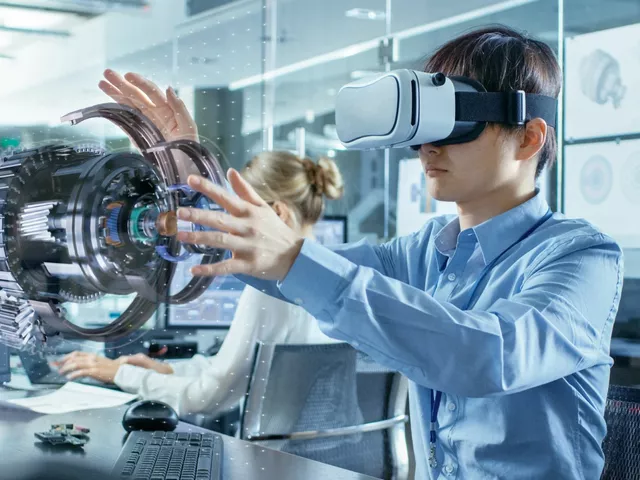Introduction to Artificial Intelligence
Artificial Intelligence (AI) is a field of computer science that focuses on the development of machines that can think and act like humans. AI systems use algorithms to analyze data, identify patterns and make decisions with minimal human intervention. AI can be used to automate tasks and processes, making them more efficient, accurate and cost-effective.
What is AI Used for?
AI is used in a variety of applications, from personal assistants like Siri and Alexa to self-driving cars and industrial robots. AI is also used in healthcare, finance, and manufacturing, as well as in many other industries. AI can analyze large amounts of data quickly and accurately and can be used to identify trends and make predictions.
What is the Best Way to Learn AI?
The best way to learn AI is by doing. There are many online courses, tutorials and resources available to help you understand the basics of AI and get started with programming. It's also important to stay up-to-date with the latest developments in AI, so it's worth reading industry news and participating in online forums. Additionally, attending conferences and networking with experienced AI professionals can help you stay ahead of the curve.
As the world moves further into the digital age, more and more businesses are turning to artificial intelligence (AI) to improve their operations. AI has the potential to revolutionize how businesses operate, by making processes more efficient, accurate, and cost-effective. The benefits of investing in AI are vast, and include improved customer service, enhanced product innovation, faster decision-making, and improved data insights. Investing in AI can also provide a competitive advantage in the marketplace and enable businesses to stay ahead of the curve.
AI has the potential to revolutionize how businesses operate, by making processes more efficient, accurate, and cost-effective. AI can automate mundane tasks, such as responding to customer inquiries, freeing up employees’ time for more important tasks. It can also help businesses make better decisions by providing data-driven insights. AI can also help businesses identify trends and patterns in customer data, so they can better target their products and services.
The best way of learning artificial intelligence is to start with the basics. Get familiar with the basic concepts and principles of AI, such as machine learning, deep learning, and natural language processing. Then, start exploring the different AI platforms, such as Google Cloud AI, Microsoft Azure Machine Learning, and Amazon AI Services. Once you gain a basic understanding of AI and the different platforms available, you can start to explore more advanced topics, such as neural networks and reinforcement learning.
In addition to learning the basics, it is important to stay up to date on AI trends and developments. Attend conferences, read articles, and take online courses. Additionally, consider joining online communities, such as the Artificial Intelligence Network, to keep up with the latest news and developments in the field. Finally, it is important to practice what you learn. Experiment with different AI tools and platforms, and use them in real-world projects and applications.
Artificial intelligence (AI) is a rapidly growing field of technology that has the potential to revolutionize many aspects of life. AI is a broad term that covers a variety of technologies, including machine learning, deep learning, natural language processing, robotics, and computer vision. AI has the potential to automate mundane tasks, improve decision-making, and enable machines to understand and interact with the world around them.
In order to understand AI and its potential, it's important to understand the underlying technology. Machine learning is a subfield of AI that focuses on building systems that can learn from data. Deep learning is a subset of machine learning that uses neural networks to learn complex patterns in data. Natural language processing is the ability to interpret and generate human language. Robotics is a field of engineering that focuses on designing and building robots. And computer vision is the field of AI that focuses on giving machines the ability to perceive and interpret the world around them.
Learning AI requires a deep understanding of the underlying technology, as well as the ability to apply AI techniques to real-world problems. The best way to learn AI is to start with the basics, such as programming and mathematics. From there, students can move on to more advanced topics such as machine learning, deep learning, natural language processing, robotics, and computer vision.
As the field of AI continues to grow, understanding the technology and its potential is becoming increasingly important. By exploring the possibilities of AI, students can gain a deeper understanding of the technology and its potential, as well as the best way to learn it.






